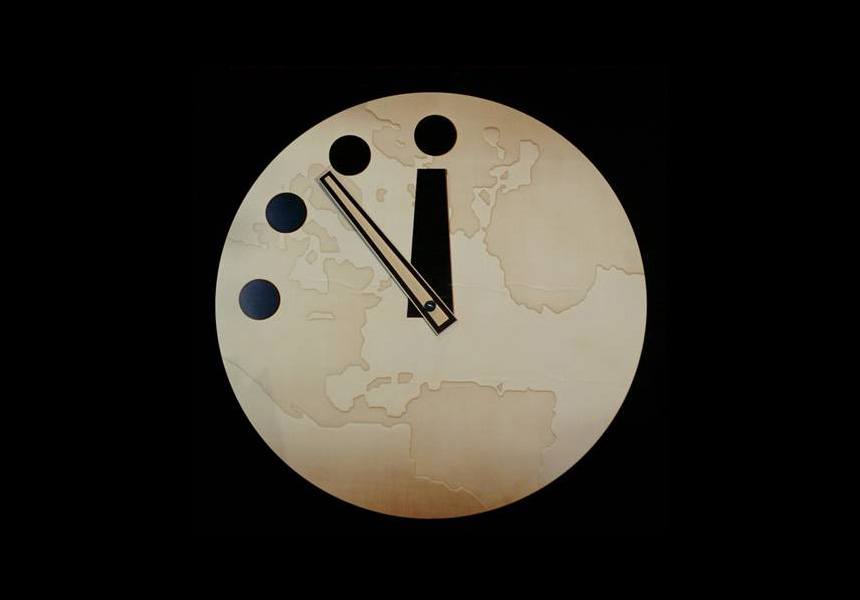Remember the Doomsday Clock? Only those of a certain generation—and perhaps librarians with too much random information in their head—do. As one of those said people on both counts, an article in the October Wired magazine caught my eye. Titled “Suspend the Deathwatch”, author Scott Brown revisits (did it ever leave?) the Doomsday Clock and its place and anachronistic stance, in today’s society.
First mentioned in 1947 in the Bulletin of the Atomic Scientists (God, I love that periodical title—I literally walk past bound issues of it on a weekly basis in my work and smile, but I digress), the Doomsday Clock is a symbolic representation of our impending worldly doom. The closer the hands get to midnight, the closer we are to total mass extinction. I suppose the Voluntary Human Extinction Movement would be very happy if we would just get on with it already.
The Atomic Scientists describe the clock thusly:
The Doomsday Clock conveys how close humanity is to catastrophic destruction–the figurative midnight–and monitors the means humankind could use to obliterate itself. First and foremost, these include nuclear weapons, but they also encompass climate-changing technologies and new developments in the life sciences that could inflict irrevocable harm.
Mr. Brown’s contention is that “we need an instrument that measures a wider variety of potential apocalyptic scenarios.” He goes on to suggest a Doom Queue—a lineup of ever grisly scenarios that would jockey for number one position. And better yet, he suggests we can all crowd source it with users picking and rating their fave apocalypse. Sounds good to me. As some of you may have attended last weekend’s Rally to Restore Sanity and/or Fear, it seems the perfect way to capture our collective anxieties and at least give us something slippery but tangible to put our money on rather than a doom-laden clockface staring into the abyss.
But in case you are still setting your watch to the old Doomsday Clock, it’s 6 minutes to midnight. Sweet dreams!
